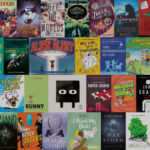In my last few Bibliotech.me posts, I reflected on what students understand and know how to do in terms of research. I apologize for the redundancy, but we added a few elements to what I posted earlier.
It may seem as though a bibliography is a fairly superficial instrument to measure student learning, but it can reveal a great deal about the students’ approach to the research process.
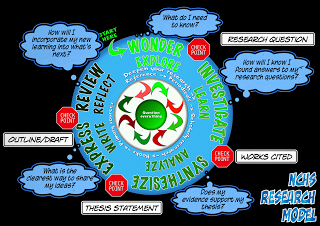 For example, when researching how today’s nations have been impacted by a legacy of imperialism, currency is of paramount concern. When we see bibliographies featuring books such as Iraq: a Country Study or Libya Since Independence with publication dates of 1998 or earlier, it raises questions. Those books do not exist in New Canaan High School Library’s collection. We would have removed them years ago as it would be hypocritical for us to carry such outdated materials while instructing students to focus on resource currency. A quick search for those resources reveals that they refer to book reviews published in academic journals which are indexed in our databases.
For example, when researching how today’s nations have been impacted by a legacy of imperialism, currency is of paramount concern. When we see bibliographies featuring books such as Iraq: a Country Study or Libya Since Independence with publication dates of 1998 or earlier, it raises questions. Those books do not exist in New Canaan High School Library’s collection. We would have removed them years ago as it would be hypocritical for us to carry such outdated materials while instructing students to focus on resource currency. A quick search for those resources reveals that they refer to book reviews published in academic journals which are indexed in our databases.
Such citations indicate that students are not doing one or more of the following:
- Citing their sources correctly.
- Evaluating the sources they find.
- Analyzing the relationship between their research task and the resources they use.
- Reading the sources listed in their works cited.
Lately, we’ve been collecting bibliographies using a very simple Google Form.
Students upload a link to their visible, but not editable bibliography. This provides us with a spreadsheet of data describing the nature of the assignment with which the bibliography was aligned and links to each learner’s bibliography.
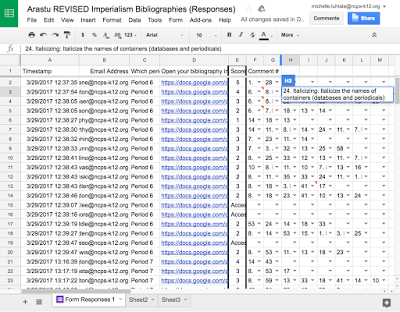 We set up a comment bank to provide students with speedy, yet comprehensive feedback on their bibliographies/works cited lists. We are still fine tuning its elements, but this is what we have so far.
We set up a comment bank to provide students with speedy, yet comprehensive feedback on their bibliographies/works cited lists. We are still fine tuning its elements, but this is what we have so far.
Using the spreadsheet functions, we created a drop-down menu in 61 columns listing all the possible comments from the aforementioned list. While reviewing student work, we click across that student’s row adding coded feedback. Ultimately, we hope to embed links to instructional materials for each comment so that the feedback does more than tell them what they did wrong, it tells them how to fix it. This will take time, but it is a worthy goal.
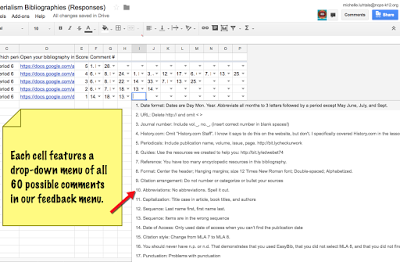 We aggregated common mistakes. They are detailed in the chart below. We are working on creating a script to automate this process so that it updates live in our Research Help page. The most common mistakes for sophomores follow. They are different from the juniors’ most common mistakes, which we interpret as positive news.
We aggregated common mistakes. They are detailed in the chart below. We are working on creating a script to automate this process so that it updates live in our Research Help page. The most common mistakes for sophomores follow. They are different from the juniors’ most common mistakes, which we interpret as positive news.
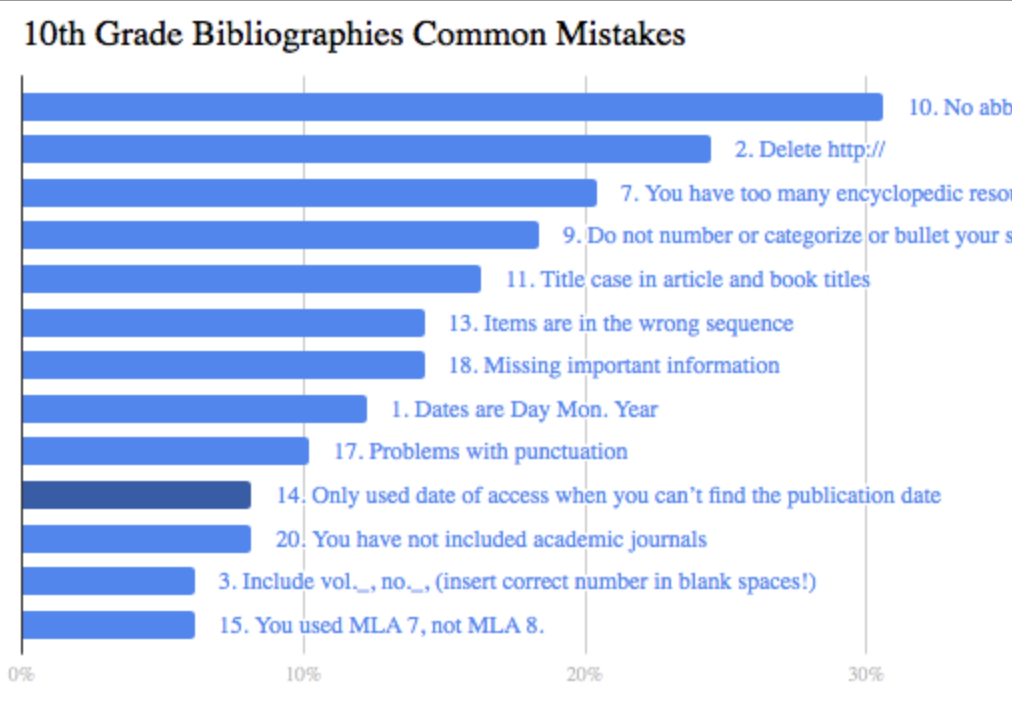 Using what we learned from the chart above, we built a lesson to help students revise their bibliographies. Then they resubmitted them. Once we review the revised drafts, we will look for overall growth within the cohort and individual growth for each learner. Here is the lesson.
Using what we learned from the chart above, we built a lesson to help students revise their bibliographies. Then they resubmitted them. Once we review the revised drafts, we will look for overall growth within the cohort and individual growth for each learner. Here is the lesson.
We recorded the lesson as a video for the teacher to use in class.
While creating a bibliography is a fairly mechanical task, the bibliography reflects more than just the mechanics of citation creation. Unfortunately many, many students lose points on critical assignments because their bibliographies do not reflect the hard work they invested in the research process. We are constantly looking for ways to help students understand why it is important to master this skill, and how to be successful. In college most students are expected to complete 3- 5 research papers per semester, and it is our aim to equip NCHS students with research skills that will help them succeed not only in high school, but in life beyond high school.
If you like this post, please add a testimonial (scroll all the way down) to my “Curriculum Champion” nomination for the AASL Social Media Superstar award. Voting closes on April 14, 2017. Thank you!





